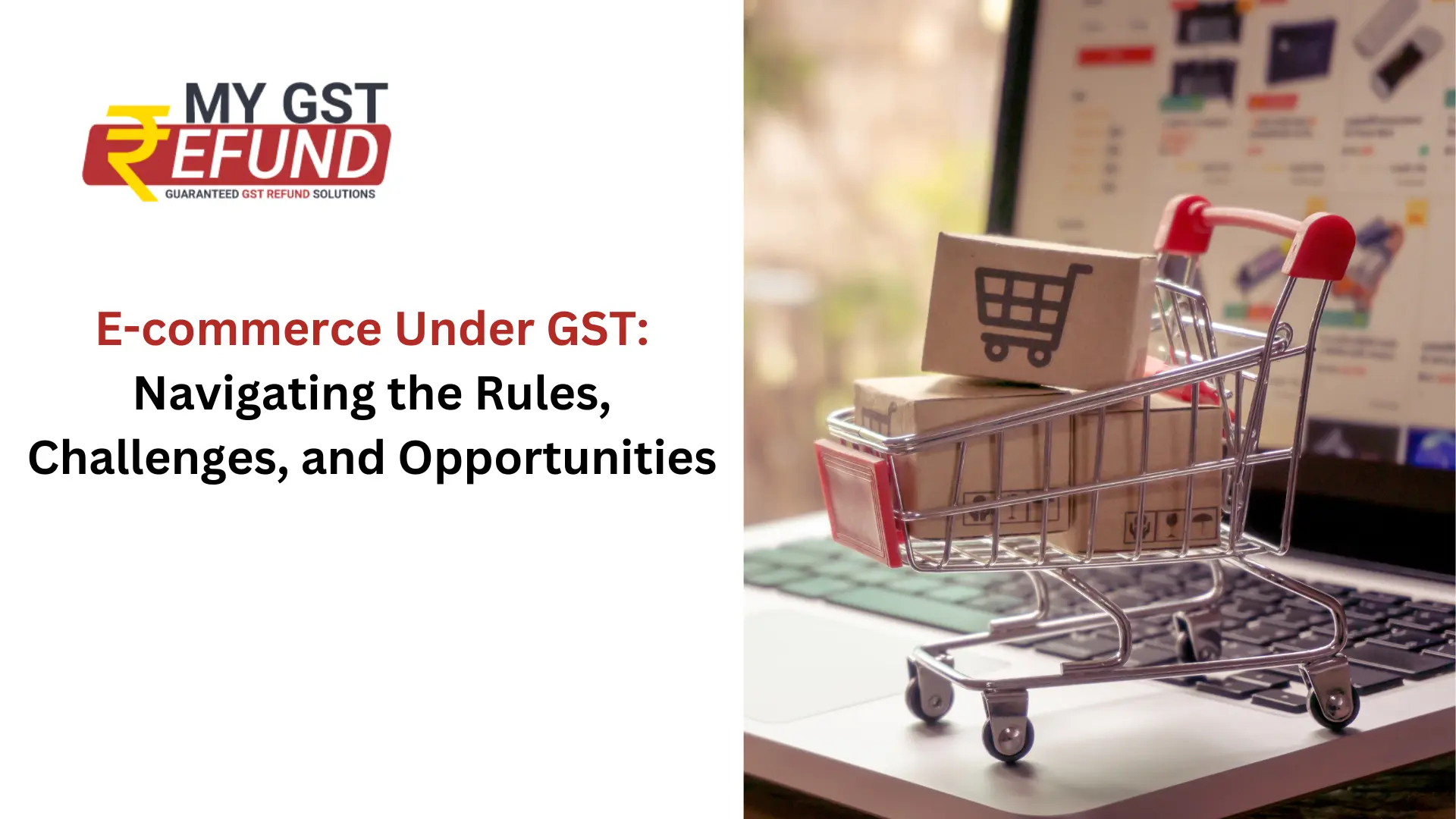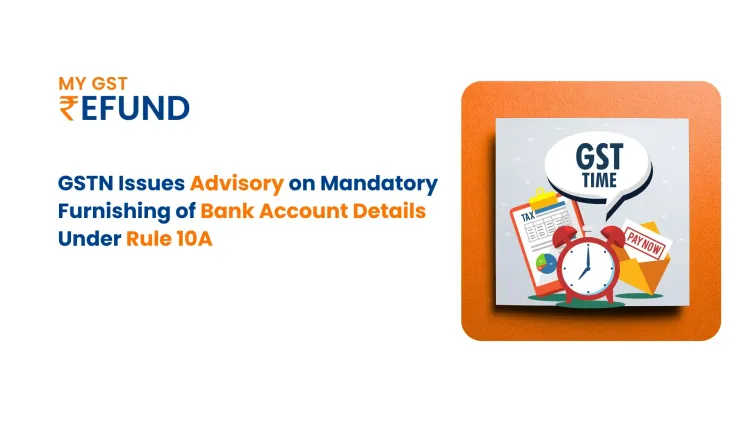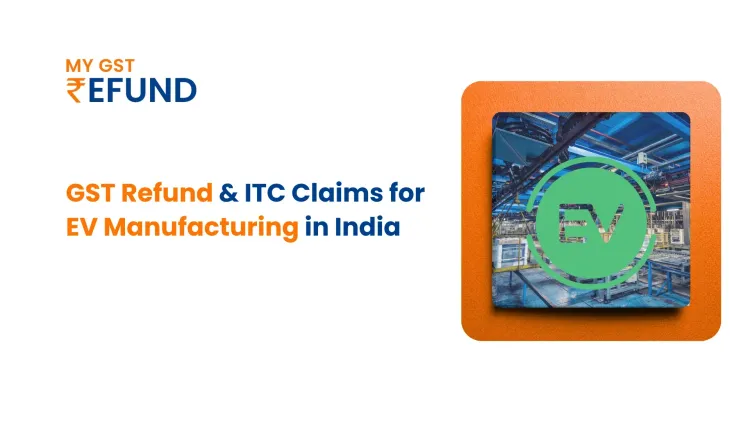E-commerce Under GST: Navigating the Rules, Challenges, and Opportunities
Published on: Mon Apr 15 2024
Bio (Reveal/Hide)

GST Rules for the e-commerce sector: Navigating the Rules, Challenges, and Opportunities
The implementation of the Goods and Services Tax (GST) in 2017 marked a significant shift in India's indirect tax regime. For the e-commerce sector, GST has introduced a set of specialized rules and compliance requirements that have significantly impacted their operations.
India's e-commerce market is booming, with projections estimating it to reach $120 billion by 2026, growing at a CAGR of 18-20% over the next few years. This exponential growth has transformed the way businesses and consumers interact, creating both challenges and opportunities in the evolving regulatory landscape.
GST Rules for the E-commerce Sector
Tax Collection at Source (TCS):
E-commerce operators are required to collect up to 1% TCS on the net value of taxable supplies made through their platforms, except for supplies made by registered dealers.
Tax Deduction at Source (TDS):
E-commerce operators must deduct up to 1% TDS on payments made to suppliers on their platforms, except for supplies made by registered dealers.Place of Supply: For e-commerce transactions, the place of supply is generally determined by the location of the recipient, irrespective of where the actual delivery of goods or services takes place.Registration Threshold: E-commerce operators must mandatorily register for GST, regardless of their annual turnover, unlike other businesses.
GST Rules for the e-commerce sector
Invoicing and Documentation:
E-commerce platforms must ensure that all supplies made through their portals are accompanied by a valid tax invoice, containing specified details. Maintenance of Records: E-commerce operators are required to maintain detailed records of all transactions, including the value of supplies, taxes collected and paid, input tax credits, and other relevant information.Compliance Reporting: E-commerce players must file periodic GST returns, such as GSTR-3B and GSTR-8, to report the TCS collected and paid to the government.
Challenges Faced by E-commerce under GST
Increased Compliance Burden:
The requirement to comply with TCS, TDS, and detailed reporting has added to the administrative and operational costs for e-commerce platforms. As per industry estimates, the additional compliance costs can range from 0.5% to 1.5% of the total transaction value.
Cash Flow Challenges:
The TCS and TDS provisions have resulted in temporary blockage of working capital, as the taxes are to be paid upfront, even before the final sale transaction is completed. This can impact the liquidity of e-commerce businesses, especially smaller players.
Technological Glitches:
Frequent technical issues on the GST portal and a lack of seamless integration with e-commerce platforms have disrupted timely compliance and reporting. This has led to penalties and interest payments for delayed filings.
Reconciliation and Documentation:
Maintaining accurate records and reconciling TCS and TDS claims with supplier invoices have increased the administrative burden for e-commerce businesses. According to a Deloitte study, e-commerce firms spend an average of 50-80 man-hours per month on GST compliance.
Impact on Pricing and Margins:
The additional tax compliance costs have put pressure on e-commerce players to either absorb the burden or pass it on to consumers, affecting their overall pricing and profit margins. A KPMG analysis suggests that the effective tax rate for e-commerce companies has increased by 1-2% due to GST.
Confusion over Place of Supply:
Determining the place of supply for e-commerce transactions, especially for digital services, has sometimes led to ambiguity and disputes. This can result in uncertainty around the applicable GST rate and registration requirements.
Challenges for Small Online Sellers:
The GST compliance requirements have disproportionately impacted small and medium-sized online sellers, who often lack the resources and expertise to navigate the new tax regime. As per industry estimates, nearly 30% of small online sellers have either shut down or reduced their operations since the implementation of GST.
Opportunities for E-commerce under GST
Expanding the Tax Base:
The mandatory GST registration requirement for e-commerce operators has brought more online businesses under the formal tax net, expanding the overall tax base. This has increased government revenue collection from the e-commerce sector.
Seamless Input Tax Credit:
The ability to claim input tax credit on procurement of goods and services has helped e-commerce players reduce their effective tax burden and improve profitability. A FICCI study found that e-commerce firms have been able to claim an average of 70-80% of their input tax credits.
Integrated Supply Chain:
The destination-based GST structure has facilitated the integration of e-commerce supply chains, enabling more efficient logistics and inventory management. This has led to cost savings and improved operational efficiency for e-commerce businesses.
Growth of Specialized Service Providers: The need for efficient GST compliance has spurred the development of specialized service providers, such as GST Suvidha Providers (GSPs) and Accounting Software providers, catering to the unique requirements of the e-commerce industry. This has created a new ecosystem of support services.
Improved Transparency: The comprehensive documentation and reporting requirements under GST have increased transparency in e-commerce transactions, benefiting both businesses and consumers. This has helped curb tax evasion and informal trade practices. Opportunities for Small Sellers: The availability of the Composition Scheme, which allows small online sellers to pay a fixed rate of tax based on turnover, has helped reduce the compliance burden for micro and small enterprises. As per government data, over 1.5 million small online sellers have opted for the Composition Scheme since its introduction. Exports Boost: The zero-rating of export sales has enhanced the competitiveness of Indian e-commerce players in the global market, opening up new opportunities for growth and expansion. India's e-commerce exports have grown by over 20% since the implementation of GST.
The Way Forward
To further support the e-commerce industry and address the lingering challenges, the following measures can be considered:
Streamlining TCS and TDS Provisions:
Simplifying the TCS and TDS mechanisms, including exploring the feasibility of a unified TDS/TCS compliance, can ease the cash flow and administrative burdens for e-commerce players. Improving GST Portal Stability: Enhancing the technological infrastructure and user interface of the GST Network can facilitate smoother compliance and reduce disruptions for e-commerce businesses. Dedicated E-commerce GST Cell: Establishing a specialized GST compliance cell or helpdesk within the GST administration, catering to the unique needs of the e-commerce industry, can provide targeted guidance and support.
Capacity Building for Small Sellers:
Launching focused training and awareness programs to educate small online sellers on GST compliance can empower them to navigate the new tax regime effectively. Collaborative Policymaking: Encouraging regular dialogue and feedback between the government, industry associations, and e-commerce stakeholders can help shape more responsive and balanced GST policies for the sector. Leveraging Technology: Promoting the adoption of advanced technologies, such as automation, artificial intelligence, and blockchain, can further streamline GST compliance and improve overall operational efficiency for e-commerce businesses.
By addressing these areas, the GST framework can continue to evolve and better accommodate the dynamic needs of the rapidly growing e-commerce industry in India, fostering innovation, competitiveness, and sustainable growth.
Related Posts





